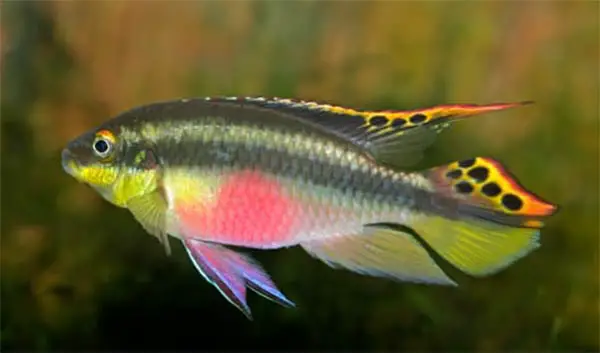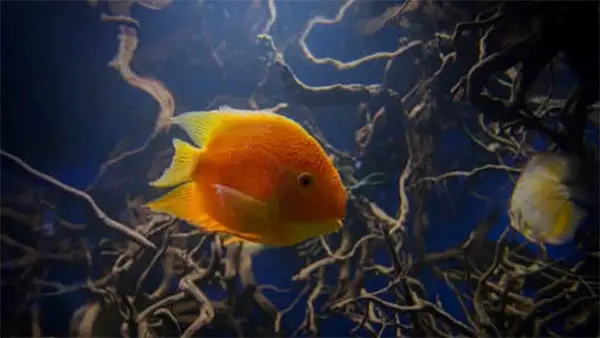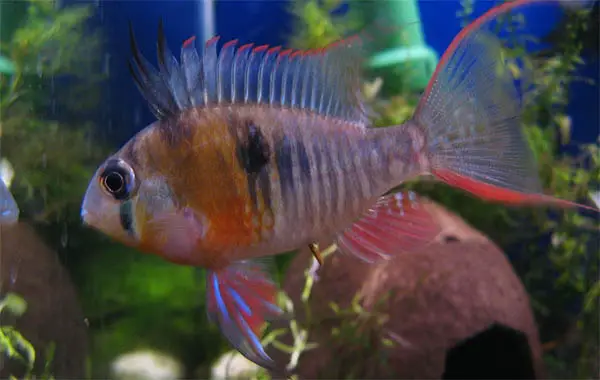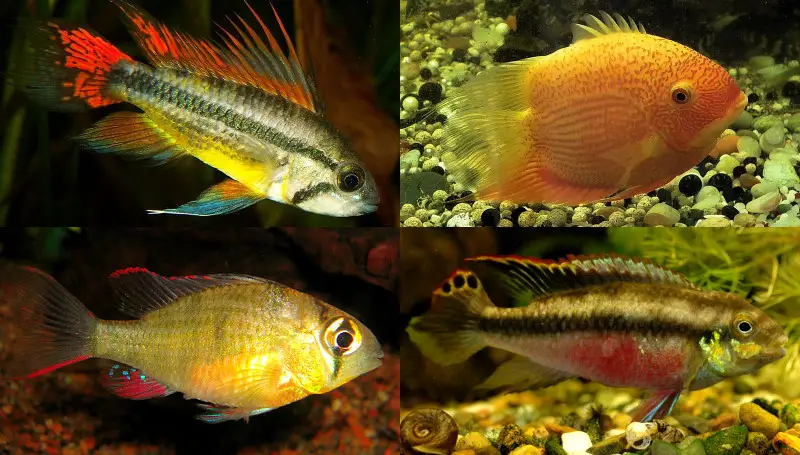Ever wondered which are the best cichlids for your community aquarium?
Cichlids are really interesting fish to keep. This is because they often combine attractive colors with compelling behavior. But, a lot of the larger and aggressive cichlids aren’t a good fit for community tanks.
So, here we have a list of five of the best cichlids for your community fish tank.
Caveat: the fish on this list are not guaranteed to settle well into your aquarium. Due to their intelligence, individuality, and mercurial nature, any cichlid in a community aquarium must be observed to ensure that it is not bullying its tank mates.
5. Kribs (Pelvicachromis pulcher)
Kribs are a soft, acidic water, West African riverine cichlid. However, they have been bred in captivity for many years. So, they have adapted to a wider range of pH and hardness values. Therefore, you can most likely keep them successfully in your tap water.

Interestingly, unlike most cichlids, the female is actually more colorful than the male; she has a strong cherry red belly (especially when in breeding dress). This fish reaches a max size of 4.9 (12.4cm) inches.
4. Apistos (Multiple Apistogramma Species)
Like kribs, apistos come from soft, acidic rivers. But, unlike kribs, they come from South America’s Amazon Basin rather than the tropical rivers and streams of West Africa.

Keep in mind that apistos can be more challenging to keep than many of the fish on this list. This is because they are more recent arrivals in the hobby. As such, they may need water conditions similar to their wild environment (low pH and soft water). Apistogramma is a genus rather than a species; as such, there are a number of species available. The most commonly sold apisto is A. cacatuoides and it grows to be 3.1 inches (8cm) in length.
3. Angelfish (Pterophyllum scalare)
Sure enough, angelfish are cichlids. And you know what, they also make great community fish. Sure, like any cichlid, they can be prone to showing bouts of aggression. But, so does any fish on this list.

https://commons.wikimedia.org/w/index.php?curid=31199216
Angelfish are the quintessential community tank cichlid.
Angelfish come from the soft, acidic waters of the Amazon Basin. But, like kribs, they have been tank raised so long that they now thrive in our typical tap water. Angelfish come in many strains and grow to around 2.9 inches (7.5cm).
2. Severums (Heros severus)
This is a controversial one because severums aren’t really suitable for the average community aquarium. This is because severums can grow as large as 12 inches (or around 30cm)!

However, despite their large size, their temperament is similar to that of an angelfish. Sometimes severums can be aggressive, but typically they are quite placid. Severums are also South American cichlids, but due to being captive bred, they tolerate a wide range of pH and hardness values.
1. Bolivian Ram (Mikrogeophagus altispinosus)
I picked the Bolivian ram for number one on this list for a few reasons. First of all, because it’s small. Also, it’s been captive bred for generations, so while its wild counterparts need soft/acidic water, captive raised fish can handle our typical tap water with ease.

https://commons.wikimedia.org/w/index.php?curid=8729912
The Bolivian ram is my favorite choice for a community aquarium cichlid..
While it can be shy, it generally has a relaxed personality. Most importantly though, I find Bolivian rams to hardy and robust.
Honorable Mention – German Blue Ram
When I talk about the Bolivian ram being hardy, that’s meant in comparison to its cousin, the German blue ram (Mikrogeophagus ramirezi). Unfortunately, the blue ram is often found in local pet stores as a weak and sickly fish. This is a result of poor practices on fish farms. Check out this article on why German blue rams die so often after you get them home.



